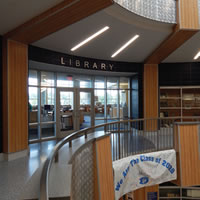
The interior spaces where students’ high school careers and experiences unfold are of prime importance to those young people, faculty, staff, and administrators. The best such spaces help districts and individual schools express and realize their goals while guiding high school students toward achieving theirs.

Today's community colleges are interested in placemaking, in creating campuses where students learn, linger, and interact. With an eye to design, here are three examples of community colleges stepping up their interior spaces to improve the student experience.
Leveraging a strategic impact plan for energy training and education.
Cooperative purchasing helps K-12 school districts keep the shelves fully stocked while saving money.

Allergen triggers often exceed safe thresholds in school buildings. The first commercial vacuum certified asthma & allergy friendly by the Asthma and Allergy Foundation of America can help reduce exposure.
An update on how the planning has come into being on the BGSU campus.
Enhancing k-12 facilities management by leveraging BIM data.
Purchasing through cooperatives can help a college or university remain fully stocked with supplies while saving money for both the institution and its students.

School air quality issues can affect absenteeism and student test scores. Rigorous cleaning using machines certified with the Carpet and Rug Institute’s (CRI) Gold Seal of Approval can help.
Rapid advances in AV technologies over the past decade have created new opportunities to improve education. Let’s dive into five different ways that colleges and universities can put this new generation of AV solutions to work.